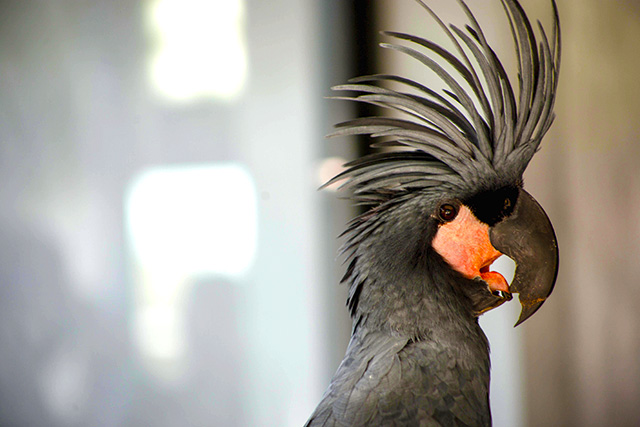Cockatoo birds literally play the drums to attract a mate
02/15/2019 / By Jhoanna Robinson

The males of the palm cockatoo (Probosciger aterrimus), a type of parrot, were found to bank on their percussion-playing talents to catch the eye of the opposite sex and hopefully engage them in a mating ritual. Aside from their drum-beating antics, they were also discovered to dance and bang their head to the rhythms that they create.
A team of researchers led by Robert Heinsohn, a conservation biologist at the Australian National University in Canberra said this activity of the cockatoo is rare in the world, as this is the only non-human example of drumming that was manufactured via external tools, much like what drummers in rock bands do with their sticks and percussion instruments.
In a study published in Science Advances, the researchers, who are experts from the University of Queensland and Deakin University in Victoria, noted, “This behavior is remarkable because tool manufacture among nonhuman species is rare and almost always occurs in the context of solving problems related to foraging, but palm cockatoos use their tools only to make sounds.”
For instance, the researchers noted that even though apes have been observed to wield pieces of wood or stick, they use it to dig in the ground to look for food and not to create sound, even though evidence exists that they have an ability to identify rhythmic beats.
After seven years of observation (from June to December between 2009 and 2015), the researchers identified 131 distinct drumming sequences (each consisting of five to 92 percusssive taps) created by 18 cockatoos at Cape York Peninsula in northern Australia. These sequences, even though they have a regular beat and have repeated elements, are distributed at different intervals by each cockatoo, suggesting that every cockatoo has its own drumming style.
“The icing on the cake is that the taps are almost perfectly spaced over very long sequences, just like a human drummer would do when holding a regular beat. Some males were consistently fast, some were slow, while others loved a little flourish at the beginning,” Heinsohn said.
Male cockatoos in Australia use sticks or seedpods – usually from Grevilla glauca (bushman’s clothes peg) that they modify using their beaks – to club a hollow tree during their performance, which is punctuated by “calling, darkening of red cheek patch or blushing, and chest erection.”
In New Guinea, male palm cockatoos are observed using their clenched foot when drumming.
The researchers highlighted the main difference of the drum-beating activities between humans and cockatoos: whereas percussion-playing in humans encourage group involvement via dance or collective appreciation, percussion-playing in cockatoos is a targeted solo performance meant to be conducted for a singular purpose, which is to attract a possible mate. (Related: Can sex shorten life span in females? Stanford and Cornell scientists report.)
Heinsohn said the drumming is supposed to “entice the females to lay their egg in his nest hollow.”
Palm cockatoos are a monogamous, slow-reproducing, and territorial species of parrot. They are the biggest among the parrot species, with an average height between 49 and 68 centimeters. The males weigh between 540 grams and 1.1 kilograms, while the females weigh between 500 and 950 grams.
The palm cockatoo, which is also called the Cape York cockatoo, the great palm cockatoo, the black macaw, the goliath cockatoo, or the great black cockatoo, is the loudest parrot.
Read up on more stories such as this one at WeirdScience.news.
Sources include:
Tagged Under: cockatoo, drum, mating ritual, research



















